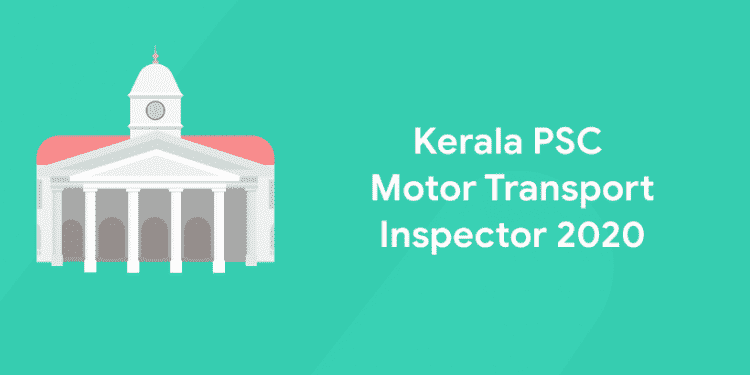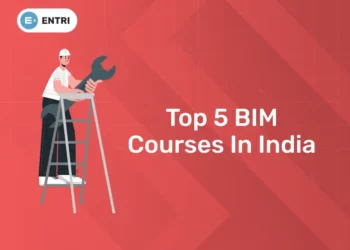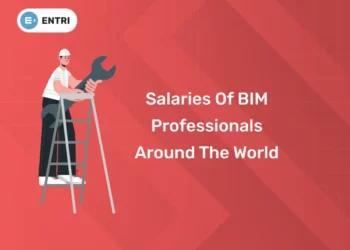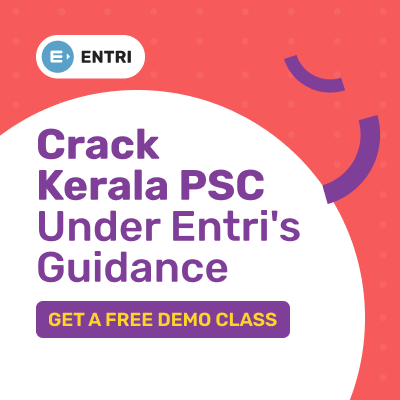Table of Contents
Kerala PSC has invited applications from Mechanical/ Automobile engineering graduates under 36 years towards Motor Transport Inspector posts. Interested aspirants can now apply towards Kerala PSC Motor Transport Inspector (Technical) 2020 notification (Category No: 482/ 2019). Candidates should apply towards Motor Transport Inspector posts through their “thulasi” profile on or before February 05, 2020. As of January 2020 only 05 vacancies are reported, but the numbers can go up. Selected candidates will be appointed in the salary scale of Rs. 39500 – Rs. 83000/ in the Police department (Motor Transport wing).
Click here to attempt a free PSC Motor Transport Inspector mock test
Kerala PSC Motor Transport Inspector (Technical) 2020 Eligibility Criteria
- Education Qualification: A Degree in Automobile Engineering or Mechanical Engineering
recognized by the Government of Kerala, and
Post Qualification Experience for a period of not less than 5 years in a major Registered Automobile Workshop having not less than 50 employees of which not less than three years should be as an Assistant Engineer or its equivalent post and the same shall be one acquired after the date of registration of the Work Shop. The experience should be in Automobile Engineering/ Mechanical Engineering
- Age Limit: 25 years – 36 years. Candidates born between January 02, 1983, and January 01, 1994 (both dates included) are eligible to apply. Age relaxations according to the government norms are applicable.
- Candidates must have a valid current Heavy Duty Licence for Driving.
- Physical Measurements
Candidates must be physically fit and should possess the following minimum physical standards.
(a) Height – 165 cms
(b) Chest – 81 – 86 cms
Minimum chest measurement – Normal 81 cm and expanded 86 cm (Minimum expansion not less than 5 cm)
- Aspirants each eye must have a full field of vision. Colour Blindness, Squint or any morbid conditions of the eyes or lids of either eye shall be a disqualification.
Newly appointed Motor Transport Inspector shall undergo training for a period of six months and shall pass a test as prescribed for Motor Transport Sub Inspector within the period of probation unless he has already passed the same. The selected candidates shall be on probation for a total period of two years on duty within a continuous period of three years.
Click here to attempt a free PSC Motor Transport Inspector mock test
Click here to download Kerala PSC Motor Transport Inspector (Technical) 2020 Official Notification free pdf:
MOTOR TRANSPORT INSPECTOR 2020
Kerala PSC Motor Transport Inspector Syllabus
1: Which Year First Assembly Election was held in Kerala?
Let’s check the detailed syllabus for Kerala PSC Motor Transport Inspector (Technical) Syllabus.
Motor Transport Inspector: Mechanical Engineering
- PROPERTIES OF MATERIALS – Mechanical properties, physical properties, thermal properties, electrical properties, and chemical properties.
- TESTING OF MATERIALS – destructive and nondestructive testing.
- MEASURING INSTRUMENTS – precision and non-precision instruments. Vernier caliper, micrometer, Vernier height gauge, and depth gauge.
- CLASSIFICATION OF GAUGES- plug gauge, ring gauge, snap gauge, screw pitch gauge, feeler gauge, and standard wire gauge.
- COMPARATORS – mechanical, electrical and optical comparators. (Working only).
- WELDING – classification of welding, advantages, and limitations of welding, the principle of arc welding, arc welding machines such as DC generator and AC transformers. (working only).
- GAS WELDING – oxyacetylene welding (description only), gases used types of flames (uses) another welding such as submerged arc welding, MIG and TIG welding (description only).
- DEFECTS OF WELDING – causes and remedies of the defects. Soldering and brazing (brief description).
- FOUNDRY – uses of different foundry tools, types of molding sand, properties of molding sand, different molding processes such as bench molding, pit molding, floor molding, and sweep molding.
- ALLOWANCES ON PATTERN – shrinkage, draft, machining, distortion, and rapping allowances.
- FORGING OPERATIONSupsetting, drawing down, setting down, punching, welding, and cutting (description only).
- FITTING- tools used in fitting (files, punches, vice, chisels, hammers, surface plate, surface gauge, V- Block, combination set, drills, calipers, taps and dies, reamers (uses of these tools).
- METALS AND ALLOYS- Types of cast iron, properties, application of cast iron. List the various types of steels such as low carbon steels, medium carbon steel, stainless steel, and high carbon steel and magnetic steel. A brief explanation of non-ferrous metals and alloys of aluminum and copper. Heat treatment – annealing, normalizing, hardening, tempering, case hardening (description only).
- METAL CUTTING – the difference between orthogonal and oblique cutting, cutting speed, feed depth of cut (definition only), and properties of various cutting tool materials.
- LATHE – Types of lathes, lathe parts, specifications, operations on a lathe such as turning, taper turning, facing, boring, drilling, threading and reaming. Tool and work holding devices used in the lathe.
- PROPERTIES OF FLUIDS – Density, specific weight, specific volume, specific gravity (simple problems).
- FLUID PRESSURE AND ITS MEASUREMENTS – define pressure, atmospheric pressure, absolute pressure, and gauge pressure, pascal’s law. Pressure measurement by piezometer tube, simple manometer and differential manometer, (simple problems). Statement of Bernoulli’s Theorem, Bernoulli’s equation, continuity equation, working of venturi meter, orifice meter and Pitot tube (simple problems).
- ORIFICES – Types of orifices – vena contracta – coefficient of contraction, coefficient of velocity, coefficient of discharge (simple problems).
- NOTCHES – Rectangular Notch, Triangular Notch, discharge over notches (simple problems). LOSSES OF HEAD IN PIPES – major and minor losses – loss of energy due to friction – Darcy’s formula for loss of head in pipes, Chezy’s formula (simple problems). Turbines – classification, Impulse and reaction turbines, classification of reaction turbines, use of the draft tube, working of Pelton wheel and Francis turbine.
- PUMPS – Different types of pumps (working only), the function of air vessels, foot valve and strainer, slip of a pump.
- STRESS AND STRAIN – definition of stress, strain, longitudinal strain, lateral strain, Poisson’s ratio, the factor of safety, statement of hook’s law, (simple problems).
- FRICTION – Types of friction, laws of friction, the definition of angle of friction, coefficient of friction and limiting friction (simple problems).
- BOILER – define boiler, the function of boiler – classification of the boiler, comparison, boiler specifications, Boiler mountings and boiler accessories (working and functions only).
- PROPERTIES OF STEAM -wet steam, dry steam, superheating steam, and dryness fraction (definition only). Working on the steam engine, the function of steam nozzles, working of steam turbines, classification steam turbines.
- STEAM CONDENSERS – jet condensers and surface condensers (working only).
- POWER PLANTS -types of power plants such as hydroelectric, thermal, nuclear and diesel power plants.
- RENEWABLE SOURCE OF ENERGY – solar energy.
- MANAGEMENT – meaning of management, Taylor’s scientific management, the contribution of FW Taylor, Henry Fayol’s principle of management.
- DIFFERENT TYPES OF OWNERSHIP – sole proprietorship, partnership, private limited company, a public limited company (brief description). ORGANIZATIONAL STRUCTURE – line organization, functional organization, line and staff organization.
- OBJECTIVES OF TRAINING – explain the methods of training. WAGES – the importance of good wage plan, types of wages, wage payment systems –
- INCENTIVES – straight piece rate system, time rate system, the piece-rate system with guaranteed minimum wage – differential piece rate system (explanation only).
- Differentiate the IC and EC engine, working four-stroke petrol and diesel engine, two-stroke petrol and diesel engine, comparison of petrol and diesel engine, comparison of four strokes and two-stroke engine. Functions of carburetor and fuel injector.
- CLASSIFICATION OF COOLING SYSTEMS – air cooling and water cooling, functions and radiator, and thermostat.
- GOVERNING OF IC ENGINES – quantity governing, quality governing, hit and miss governing.
- TRANSMISSION SYSTEMS – the function of the clutch, flywheel, gearbox, propeller shaft, and differential.
- FUNDAMENTALS OF THERMODYNAMICS – the concept of system – open, closed, isolated system. Intrinsic properties and extrinsic properties – Laws of thermodynamics and laws of perfect gases – Thermodynamic processes – constant volume process, constant pressure process, adiabatic process, an isothermal process (explanation only).
- REFRIGERATION – the purpose of refrigeration, the unit of refrigeration, the concept of the cop. Working on an air compression refrigeration system based on reversed Carnot cycle and Bell Coleman cycle. Cop of the Carnot cycle (simple problems).Working on a vapor compression refrigeration system.
Kerala PSC Motor Inspector: Automobile Engineering
- ENGINE CONSTRUCTION AND RELATED SYSTEMS: Constructional details of IC Engines cylinder block – Single cylinder and multi-cylinder, materials, cylinder liners. Cylinder head – Materials, cylinder head gasket. Pistons -Type of pistons, Piston rings – Materials,
- Types of rings – compression ring, oil ring. Connecting rod – Function, materials used, big end and small end bearings.
- Crankshaft – different shapes, Main bearings. Flywheel functions. Types of valves, sodium vapor cooled valves. Valve operating mechanisms – side camshaft and overhead camshaft, Inlet and exhaust valve materials, valve timing diagram. Camshaft – functions and drives Fuel System
- Different fuel feed systems, A.C. mechanical pump, S U Electrical pump, petrol filters, and air Cleaners, Carburetors, Simple carburetors – parts, the principle of working, compensation, mixture strength requirement, modern carburetors, float system, idle and slow speed system, high-speed system, Acceleration pump and choke system. Manifolds, silencer types.
- Various components in the Diesel fuel system – types of fuel. Distributor type pump, rotary type pumps, Fuel feed pump, and hand priming, diesel fuel filters. Governors – purpose, types – mechanical, pneumatic and hydraulic governors, Fuel injectors-types Lubrication and Cooling System
- Types of engine lubrication- wet and dry-sump lubrication, splash and pressure feed systems. Oil pumps, pressure relief valve, oil pressure indicator Oil coolers, oil filters, oil seals, Crankcase ventilation Air and water cooling, thermo-siphon and pump circulation system, thermostat, Radiators -types, pressure cap, types of coolants, pump, antifreeze solution, cooling fan – types.
- Chassis and frame: Chassis Constructional details, Types of the frame. Frame sections, bumpers, subframes. Materials used Front Axle- Introduction, Types – dead & live axle, Construction – material – cross-section, Stub axle -different arrangements Suspension System Types of front suspension for two, three & four-wheeler, Rear Suspension system.
- Introduction to springs and Shock absorbing devices-Types, Leaf, coil springs & their arrangements, Helper spring, spring shackle, shackle pin, Telescopic type Shock – absorber.
- Steering System: Principles of steering, Ackerman, Davis fifth wheel, Steering gearbox – types, Worm & roller, worm & sector, Re-circulating ball, Rack & pinion, Steering linkages – the arrangement – components. Power steering – integral – linkage-type, Collapsible type steering column.
- Factors affecting wheel alignment.
- Brake System: Types of brakes-mechanical, hydraulic, pneumatic, servo brake, Air brake. Drum and disc brake system -Internal expanding and externally contracting, Master cylinder, types – working principle, Wheel cylinder, brake bleeding, brake shoe. Air brake- working, working of servo brake – types, disc brake -working.
- Transmission system: Principle of friction clutches. Constructional features and working of-Single plate dry clutch, Diaphragm clutch, Cone clutch, Centrifugal clutch, Semi centrifugal clutch, Vacuum clutch, Hydraulic clutch, Electromagnetic clutch, Multiplate clutch (dry & wet), Fluid flywheel, Clutch disc,
- Pressure plate: Constructional features & working of – Sliding mesh gearbox, Constant mesh gearbox, Synchromesh gearbox, Progressive type gearbox, Epicyclic gearbox, Torque converter, The gear selector and shifting mechanism, 2 Wheeler transmissions, Gear drive-Chain drive, CVT & Automatic transmission. Propeller shaft and universal joint, Torque tube drive, Hotchkiss drive, Constant velocity joints, Front-wheel drive, Differential mechanism, Rear Axles-types Wheels – spoked wheel, disc wheel, and alloy cast wheel, composite wheel, Tyre construction (cross-sectional details), Tubeless tire, Tyre treads patterns, Inflation pressure, and its effects, Factors affecting tire performance.
- Constructional details of automobile dynamo, Constructional details of the alternator, Charging System -the necessity, Types of Regulators.
- Starter switch, Starter motor – constructional features, Starter Motor Drives-Necessity,
- Types of starter motor drives, mechanisms of – Bendix drive (Inboard & Outboard), Overrunning Clutch, Axial starter (sliding armature), Pre engaged type.
- Types of the ignition system, coil ignition, Components-Ignition coil, Contact breaker points, Cam angle, Condenser, Distributor, Spark plug – types, Spark advance & retard mechanism (centrifugal & vacuum), Magneto ignition system – Low tension & high tension, Rotating armature & rotating magnet type, CD. ignition system, Electronic ignition systems,
- Transistorized ignition, Computer-controlled ignition, Distributorless ignition system.
Motor Inspector: Transportation Management and Modern Vehicle Technology
- Features of M.V. Act – definition of terms -test for drivers and conductors – registration of vehicles -duties of drivers and conductors – traffic signs -M.T.0 and functional wings – organization chart. Road geometry – width of the high way -gradient – the cross-section of the road – superelevation and sight distance – road intersection.
- Insurance surveying – companies – classification of policies- factors involved in assessing fuel injection system in the Petrol engine and Diesel engine fuel injection systems in petrol and diesel engines, E.F.I-types, MPFI, Gasoline direct injection system, Throttle Body Injection, Sensors-types and construction, actuators, Common Rail Diesel Fuel System, ECM, electronic fuel injectors
- Effect of pollutants, sources of pollution, methods to control petrol engine and diesel engines emissions, Reduction of compression ratio, blow-by the control system, PCV system, Afterburner, catalytic converter, control of oxides of nitrogen, EGR, Evaporative emission control system-Charcoal canister, Diesel smoke, and its control, emission norms Modern vehicle accessories and safety devices Vehicle accessories-cruise control- electric seat and mirror- intelligent windscreen wiper automatic climatic control- adaptive noise control system- Parking distance control.
- Restraint systems-Seat belt -Airbag, electronic stability control- ABS-key less entry & Vehicle immobilizer- automatic traction control system- GPS
- Questions based on HDV Driving License
- Constitution of India
- Information Technology and Cyber Laws
Click here to attempt a free PSC Motor Transport Inspector mock test
Entri wishes you all the best for your upcoming examinations. Start your Preparation today itself. Entri will help you with thousands of questions. Attempt mock tests, analyze yourselves to improve your success rate.












